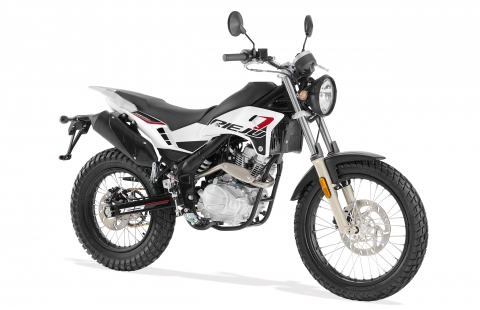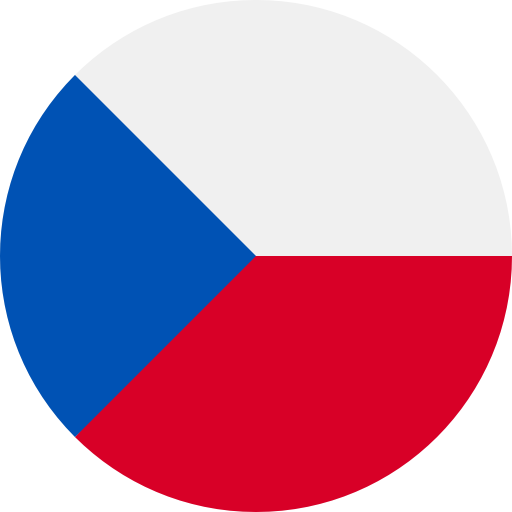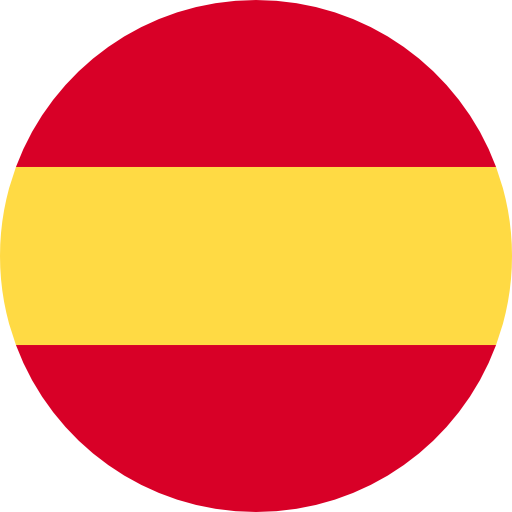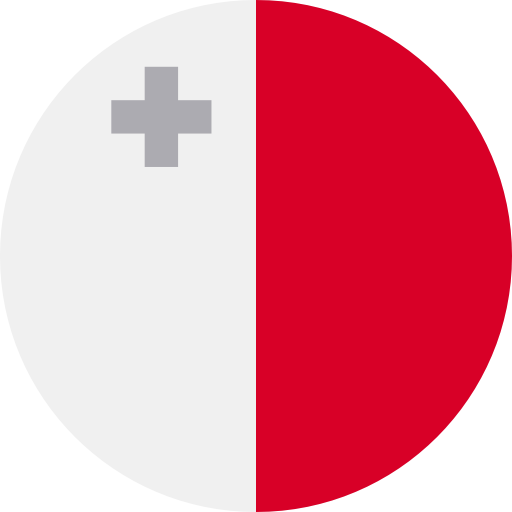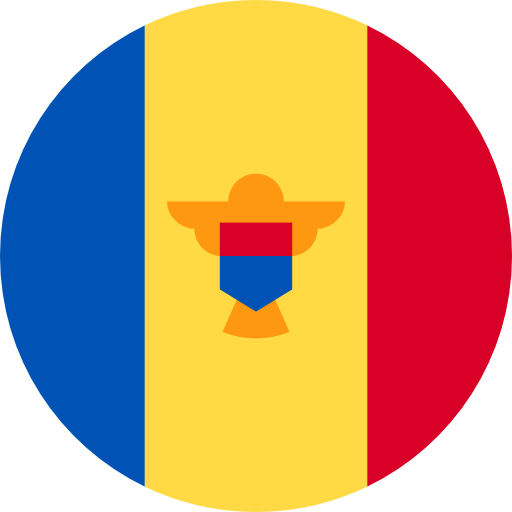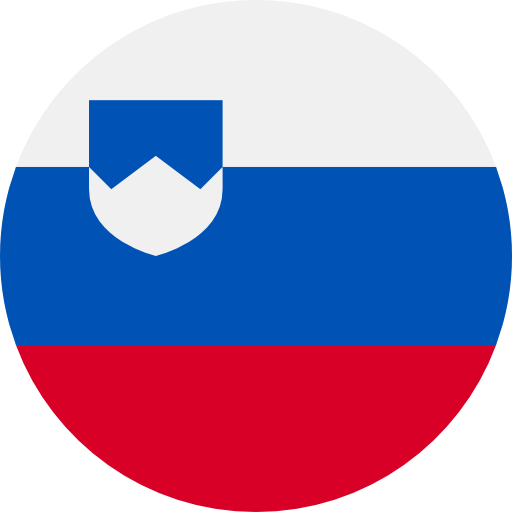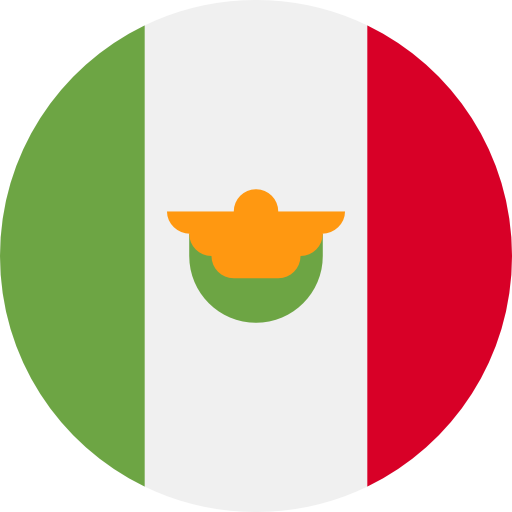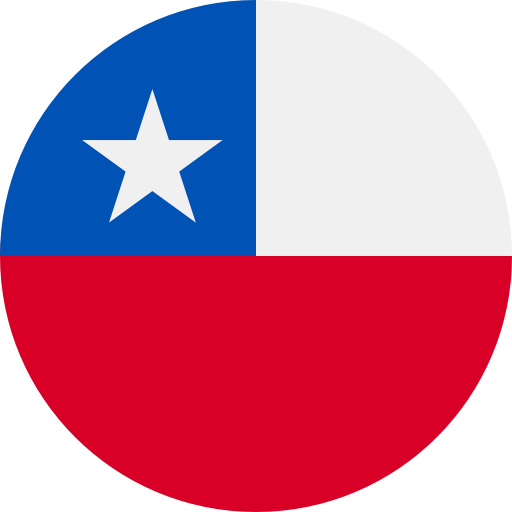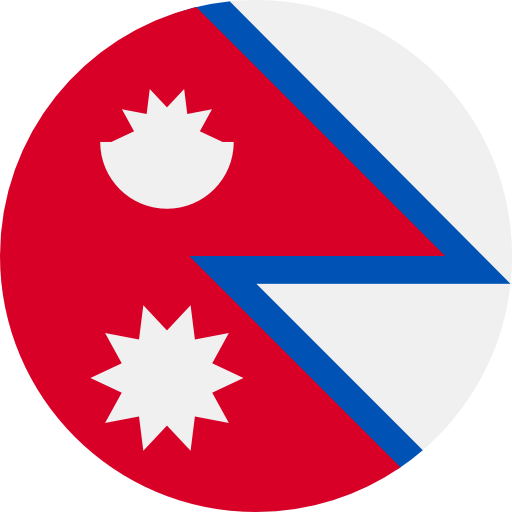Vores Historie
The early days
 In 1934 two young businessmen, Luis Riera Carré and Jaime Juanola Farres, began their entrepreneurial adventure by manufacturing bicycle accessories. They fused their names together to create the RIEJU brand name (RIEra+JUanola).
In 1934 two young businessmen, Luis Riera Carré and Jaime Juanola Farres, began their entrepreneurial adventure by manufacturing bicycle accessories. They fused their names together to create the RIEJU brand name (RIEra+JUanola).
They then began to purchase property to construct a factory, but the Spanish Civil War interrupted their plans. The Republican government confiscated their factory before construction was complete, to use the facility as a trucking center for their fleet. During the course of the war, a second floor was added to the existing building. The second floor was to be considered an interest payment upon return of the facilities.
The Civil War ends
After the end of the Spanish Civil War, RIEJU restarted its business by creating a line of bicycle accessories in 1934.
Vehicle manufacturing begins
Salvador Dalí's father, a notary, certified the creation of RIERA Y JUANOLA, S.L. (RIEJU) in 1942. The company was established as a limited company, with a capital stock of 1 million pesetas.
They continued to manufacture and market accessory components (helium for electrical equipment and Rigit for bicycle handlebars). Later they began to manufacture the first RIEJU bicycles, using the EMPORIUM and MARATHON brand names. The company (with about 35 employees) manufactured around 30 bicycles a week (this was the business plan presented to the Delegation of the Ministry of Industry).
The first motorcycle is born, the No. 1
 RIEJU's first product in 1945, was what would later be called a "moped". It was a bicycle with a 38cc 4T auxiliary engine (French Serwa engine), direct transmission to the rear wheel, two speeds, and 1 CV. It even had the ability to reach 40Km/h! The No. 1 came equipped with a chrome petrol tank, was hand-welded, varnished... and an assembly similar to the "Rolls-Royce" concept (piece by piece with excellence). This allowed RIEJU to successfully begin its entrepreneurial adventure in the world of two-wheeled vehicles with engines.
RIEJU's first product in 1945, was what would later be called a "moped". It was a bicycle with a 38cc 4T auxiliary engine (French Serwa engine), direct transmission to the rear wheel, two speeds, and 1 CV. It even had the ability to reach 40Km/h! The No. 1 came equipped with a chrome petrol tank, was hand-welded, varnished... and an assembly similar to the "Rolls-Royce" concept (piece by piece with excellence). This allowed RIEJU to successfully begin its entrepreneurial adventure in the world of two-wheeled vehicles with engines.
1949: We designed the engine for the No. 2
Based on the 1945 model of the No. 1, the first RIEJU moped was manufactured in 1949. The moped had a small, French 50cc 4T independent transmission engine connected to a clutch, along with a gear shift. It was completely designed and developed by RIEJU. Therefore, July 1949 is considered the birth date of the No. 2.
The No. 2 was one of the most well known motorcycles of the time. It is without a doubt, one of our most appreciated historical mopeds.
The steadfast principle: technological advancement
The No. 3 appeared the following year in 1951: This moped differed completely from the previous model, with the exception of the engine. The following year, 1952, aesthetic changes where made in the development of the No. 4. These advancements and improvements continued at a rapid pace. The company strived to perfect the RIEJU engine assembly, and to incorporate typical motorcycle features into the design. During that time, the steadfast principle was advancement and improvement. Between 1950 and 1955, more than 21 prototypes were produced, and the company began to use high-tech quality control processes. At RIEJU, the commitment to quality was a clear objective from the onset, along with competitive value and the desire to stand out in the industry.
The first 100% RIEJU motorcycle

In 1953, the 175cc RIEJU (with an AMC 4T engine) was born. The model was black in color with gold lines on the finish, and was equipped with a suspension system (hydraulic telescopic front fork and oscillating rear suspension with hydraulic shock absorbers). A partnership was created with the engine manufacturer AMC to supply the engines, since RIEJU had little experience with this type of engine, and was unable to self-manufacture the engine. The company also had a partnership with FITA in Figueres (where engines were manufactured under license). The 175 was based on the GIMA 175. RIEJU adapted and modified the design to manufacture a model that was lighter, easier to drive, and in general a more desirable design, especially since it provided a much more comfortable ride on the road. Additionally, the model boasted more efficient fuel consumption (due to improvements made to the RIEJU engine). This feature contributed to increased sales. 5,000 units were manufactured between 1953 and 1961. Afterwards (the chassis) its commercial run (propelled by a different type of engine - the Hispano Villiers) lasted another 4 years. During this time, 1,000 vehicles were produced per year. The great demand by distributors, and the power of the 175cc RIEJU gave great prestige to the company name.
With its carefully planned business strategies, RIEJU was able to survive (even on a small scale) while many Spanish industry giants in the sector failed. RIEJU always remained faithful to its initial idea of making the best of each moment.
The misunderstood scooter

In 1959, RIEJU worked on the development of a scooter, using 50 and 125cc AMC engines. The design was based on the French Sulky high-wheel scooter. In 1958, RIEJU introduced its commercial version of the scooter project under the name ISARD: a motorcycle-scooter hybrid, with a very unique look. This model nearly drove the company to fail, since it was never successful in the commercial market. The introduction of a bold and daring look, combined with the ambition to introduce a perfect finished project to the market (which raised the sales price considerably), and poor mechanical accessibility forced RIEJU to abandon production in 1960 - with few units sold.
The TAHON (SPORT 125), a slightly modified copy of the French Derny with a 2 stroke AMC engine, was also unsuccessful. Oddly enough, today the model is one of the most admired motorcycles (for its unique look) in our collection by our visitors. The model also received great admiration from visitors at the Bassella Motorcycle Museum's "Postwar Motorbikes Exhibition" of February 2006-2007.
Better times

In 1958, the 125cc JACA Sport model was added to the RIEJU product line. It was very sporty for the time, and included features such as aluminum wheel rims, handlebars, a racing seat, an air-cooled brake drum...These were all luxury items very few could afford at the time, and it came with a very high price. RIEJU quickly ascertained the cause of the poor sales response (the model was greatly admired, but it did not conjure the desired commercial success). Therefore, the 125cc JACA was removed from the market in 1959. There was also a touring motorcycle that was manufactured without all of the extras on the SPORT model. This version enjoyed excellent commercial success.
In 1959, Rieju launched the JACA (equipped with a 125 cc 2T AMC engine), a model with a more conservative look than its predecessor, which, with sales of nearly 3200 units between 1959 and 1963, brought the company back to a stronger position.
Italy and the moped
There was a major decline in new registrations in Spain in 1960. The 175cc engine was no longer attractive to the public, who demanded a new, different model. One type of model that enjoyed tremendous success at the time in Italy was the small cylinder vehicle. The moped. With this in mind, RIEJU looked for solutions in Italy. The company formed an alliance with MOTORI MINARELLI. RIEJU became the exclusive importer of this brand of engines and parts in Spain.

1964. RIEJU's second phase
RIEJU began what many consider to be its second phase in 1964. After signing an agreement in 1960, the company obtained a license to manufacture Italian engines in Figueres. This marks a "before and after" for RIEJU, since all of the moped engines the company assembles to this day are of MINARELLI origin.

The manufacture of Minarelli engines (under license) began in Figueres (at Industrias FITA), with a progressive plan to produce an integral engine. The first result was the JACA Version with a 3.5 CV engine and a maximum speed of 70 km/h. The speed had to be limited due to a new law, which established a speed limit of 40 km/h for mopeds. Since the RIEJU engines were not being used to their full potential, they became known as being practically "indestructible". This reputation prompted state officials, such as those at Correos de España (the Spanish Post Office), to begin to use RIEJU vehicles.
A new series of RIEJU motorcycles and mopeds resulted from the MINARELLI-RIEJU partnership. This series of motorbikes proved to be very reliable on the often difficult Spanish roads of the 1960's. These robust motorbikes with solid wheelbases - a symbol of quality - are still ridden throughout the country to this day.
The P3A model was manufactured until 1971, the year the off-road version was introduced. In May 1974, the company began manufacturing the CONFORT 400, CONFORT 402, and TT 402 models. These models were all updates of previous models, similar to the GT 404; a moped with a much more modern double cradle frame.
Adding to the product line
 In 1976 and 1977, new models were constantly being introduced to the market. Many of the models were improvements over the previous models. The first all-terrain motorcycles were developed during this time. Later, RIEJU would showcase these developments by achieving success in the competitive racing world. During these years the CONFORT, TT 503, CONFORT 501, and TT 504 models were brought to light; with aesthetic changes from the previous models.
In 1976 and 1977, new models were constantly being introduced to the market. Many of the models were improvements over the previous models. The first all-terrain motorcycles were developed during this time. Later, RIEJU would showcase these developments by achieving success in the competitive racing world. During these years the CONFORT, TT 503, CONFORT 501, and TT 504 models were brought to light; with aesthetic changes from the previous models.
Welcome to competition
In 1978, the TT 406 came onto the scene as an improved redesign of the TT, with a 74cc engine. MINARELLI wanted to introduce this model to the highest level of all-terrain competition. And so it was. RIEJU began a successful adventure, participating in its first ever Spanish Enduro Championship in the 75cc category. (RIEJU obtained a total of 12 national championships in this category during its history!).

This year, RIEJU unsuccessfully competed in the automatic moped category
Hello Marathon!

1979 is also one of the most important years in RIEJU history. The TT 505 (with an exhaust type "muffler") MARATHON series in 50 and 74cc was developed, and was presented at the Barcelona Exhibition. The series gave identity and color to the RIEJU name: From that time on, the public associated the color green with the RIEJU brand name for all-terrain vehicles. As a result of the success obtained from this model, RIEJU began to specialize in off-road motorcycles.
This color remains associated with RIEJU even today, as does the mythical name associated with the brand name when speaking of the MARATHON: almost a legend in the mind of fans, fueled by a nostalgic desire to own a motorcycle produced since the time of their birth through the 1990's: its features and successes make it a deserving part of Spanish motorcycling history.
Also in 1979, manufacture of the 50 AUTOMATIC KS began.
The 80cc Marathon
In 1980 the MARATHON 80 ENDURO and CROSS was introduced, motorcycles that would be present in most races and that laid claim to many victories. For the road, on the other hand, 1983 bore witness to the arrival of the STRADA 75, with a 5-speed gearbox and disk brake on the front wheel. 1984 saw the appearance of the MR8O after some previous small modifications, it was to be the worthy successor to the Marathon due to all the experience gained after years of competition.
New models
At the 1985 Barcelona Exhibition, RIEJU displayed the new models. The SPRINT model (a new automatic moped) included the first aesthetic changes to the MARATHON (the SUPER MARATHON 50 that would later become the RV 50 in 1986). That year RIEJU received the Silver Plate for Motorcycle Achievement from the Spanish Government for winning second place in the Enduro World Championship. RIEJU also won the 80cc Spanish Enduro Championship and the 80cc Junior Speed Championship.
In 1987, total production reached 8,000 units. In 1990 15,000 motorbikes were sold. Almost all of the models sold had manual transmission, which made RIEJU the industry leader in this sector.
50th Anniversary
In 1992 RIEJU celebrated its 50th anniversary as a company. The company celebrated by introducing the new WINDY model, an automatic moped with an auto-mix scooter engine, disc brakes, and space to store a helmet under the seat. That same year, the XXV Olympic Games were held in Barcelona.
Drac for the new generation

In 1993 another famous RIEJU vehicle was born: the DRAC all-terrain 50cc moped, which shared the market with the RR 50 (which had a more stable body and inverted fork). As a result of the partnership and collaboration with CASTROL Spain, the first versions of the CASTROL RR version were introduced. These motorcycles included state-of-the-art components, and became the top racing products in the company.
For RIEJU, the Drac was a new victory. It was considered a reflection of the preferences of the new generation of moped drivers. At that time, changes to the design of the parts and the engine were normal; they were seeking better service and a glimpse at the future look of the motorcycle...and RIEJU was ready to provide it.
The European year
In 1994, RIEJU entered the French market and attended the Paris Exhibition. That same year, the company began exporting to France. Innovations such as new versions of the RR 50 model with a 6 speed engine and a separate lubrication system, allowed RIEJU to effectively adapt its products to neighboring France's market. In France, RIEJU rapidly became a brand of prestige. Thanks to the power and tenacity of the new RIERA generation, it was ready for exportation and the opening of new markets. After RIEJU's presentation at the Cologne Exhibition in 1994, RIEJU began exporting to Austria, Germany, and Hungary.
At the 1995 Barcelona Exhibition, RIEJU introduced its first scooter, the FIRST. The scooter was based on the F-12 model manufactured by the Italian manufacturer Malaguti, with whom RIEJU maintained a business alliance. The scooter came equipped with 12" wheels, disc brakes, and an aggressive design. The CROSSER and the F-10 (manufactured by Malaguti, and exclusively marketed by RIEJU under the RIEJU name in Spain) were also introduced.
The FIRST scooter was meant to be a way to sell a RIEJU scooter outside of the domestic market, to take advantage of the boom of this product type. Unfortunately, this conflicted with Malaguti's interests, and the scooter was never mass produced. Afterwards, the partnership with the Italian manufacturer ceased.
RS1. The beginning of success
 1996. Modifications to the road product line with the new RS-1 model created a small revolution due to its racing look. It was completely redesigned in Barcelona, based on the RST model chassis, as a result of collaboration with Malaguti. It was a "small racing machine". During the same year, the company began to develop completely new motorcycle projects, such as the future MRX 50.
1996. Modifications to the road product line with the new RS-1 model created a small revolution due to its racing look. It was completely redesigned in Barcelona, based on the RST model chassis, as a result of collaboration with Malaguti. It was a "small racing machine". During the same year, the company began to develop completely new motorcycle projects, such as the future MRX 50.
For the younger generation
 1998. The old bicycle assembly line was reconstructed, and a third assembly line was installed for the new MX50, the first RIEJU youth off-road motorcycle model. The brand symbol underwent an important redesign, leaving the horse behind, and adopting the symbolic "R", giving the brand its very own symbol. The 1999 International Automobile and Motorcycle Exhibition in Barcelona set the stage for an exhibition of historical RIEJU competition motorbikes. At the Exhibition, RIEJU had the opportunity to display 1999's wide product range with the new symbol, specifically aimed at younger motorists.
1998. The old bicycle assembly line was reconstructed, and a third assembly line was installed for the new MX50, the first RIEJU youth off-road motorcycle model. The brand symbol underwent an important redesign, leaving the horse behind, and adopting the symbolic "R", giving the brand its very own symbol. The 1999 International Automobile and Motorcycle Exhibition in Barcelona set the stage for an exhibition of historical RIEJU competition motorbikes. At the Exhibition, RIEJU had the opportunity to display 1999's wide product range with the new symbol, specifically aimed at younger motorists.
Additionally in 1998, the company became the exclusive importer and distributor of Benelli Italian scooter models in Spain. This partnership continued until 1999. In this time period a total of 2,000 units were imported.
Building an international stronghold
In 2000, RIEJU increased its export operations, which entailed 40% of total annual production. This percentage steadily increased to 70% in 2007, which paralleled the consistent increase in production.
That same year, an internal customer service department was created to provide direct support to the nearly 300 distributors in the French market, notably improving RIEJU's post-sales service. At the Madrid Motorbike Exhibition II, the Supermotard and the RR, with an articulated rod suspension system (PRS, Progressive Racing System) was introduced. This improved technology was introduced in all the models, without an increase in price.
The first Supermotard championship
 In 2000, RIEJU honored its goals to discover new and promising young riders, and to fuel passion for the motorcycle. Together with the motorcycle magazine Solomoto, the company organized the first Supermotard National Championship. The goal of the championship was to equalize the playing field and minimize costs for participants. The endeavor was so successful that another Cup was organized for the following year. These events attracted participants from all regions up to the Principality of Andorra. The RIEJU Supermotard Cup ran for four consecutive years. Drivers from this event continued to distinguish themselves in following years at other events, such as the Speed World Championship. Pol (2000 RIEJU Cup Champion) and Aleix (3rd in the 2000 RIEJU Cup Championship) Espargaro, and Ricard Cardus are great examples.
In 2000, RIEJU honored its goals to discover new and promising young riders, and to fuel passion for the motorcycle. Together with the motorcycle magazine Solomoto, the company organized the first Supermotard National Championship. The goal of the championship was to equalize the playing field and minimize costs for participants. The endeavor was so successful that another Cup was organized for the following year. These events attracted participants from all regions up to the Principality of Andorra. The RIEJU Supermotard Cup ran for four consecutive years. Drivers from this event continued to distinguish themselves in following years at other events, such as the Speed World Championship. Pol (2000 RIEJU Cup Champion) and Aleix (3rd in the 2000 RIEJU Cup Championship) Espargaro, and Ricard Cardus are great examples.
Perimeter chassis
2001. In 2001, the MRX model with a perimeter chassis (only the RR product line is still designed with the double cradle tubular chassis) was introduced. That same year, an innovative off-road look was added to the MRX model. The model was equipped with state-of-the-art components, in addition to a version with an improved engine power curve. The "TOP" models of the product line where given the name "PRO".
New to the Family
The birth year of the RS2: 2002. Although times were slightly difficult (there was a major decline in sales, which affected all Spanish factories), production of one of the most famous RIEJU models known today began. A road motorcycle with a cutting-edge impeccable look, this model has a larger displacement and is well-equipped with the MINARELLI AM6 engine. The model was initially developed with two different displacements (50 and 125cc), but was introduced with the 50cc cylinder capacity. This version won first prize in the prestigious Galardon Internacional (International Award), given by the MOTORCYCLE DESIGN ASSOCIATION in 2004 (in the category of motorcycles under 200cc).
In November of 2002, the 125cc 4T MRX and SMX models were introduced. These models were equipped with YAMAHA engines, after entering into a partnership. The design of the models remains true to the idea of developing models that conform to new times and new drivers. Therefore, the design includes low consumption and a sporty look as key features. With these models, RIEJU positioned themselves in the market as the alternative for all-terrain motorcycles by producing a product that is easy to use, handle, and that is reliable - in place of focusing on maximum acceleration and speed - for this product line. With a sophisticated, futuristic air and sport-racing character, these models were well-received in a difficult market.
For those that prefer to have fun
In 2003, RIEJU sold 19,530 units. This was an increase of 161.47% over the previous fiscal year. The RIEJU name is well known, and the company has created a stronghold in key EU countries with products such as the MRX-PRO (designed with a high powered special rose cylinder developed exclusively by Minarelli for the Figueres line) and the RS2-MATRIX.
At the Intermot Fair, the prototypes for the 450cc MRX and 250cc MRX models were presented. They created intense interest, not only due to the cylinder capacity but also due to the look. These models are a great indication of RIEJU's new competitive edge.
Expanding into new markets
In 2004, exports made up 67% of total production. RIEJU directly distributed motorcycles and motorbikes in Spain, France, and to importers that distributed the bikes throughout the rest of Europe. This constant increase in export volume earned RIEJU the Exporting Award from the Girona Chamber of Commerce.
The new B1 option
Towards the end of 2005, RIEJU introduced the Naked NKD125. This model was equipped with a balanced four-stroke engine (the RS2 naked), and was very well-priced. There were two finish options (classic with round headlights, sporty dome and spoiler, and the streetfighter finish). Since then, RIEJU introduced the slogan "for everyday adventure" to announce the company's new direction. This defining slogan was introduced to the press to indicate how RIEJU plans to advance into the future.
2006: Investing in the future

Remaining faithful to the slogan "Built for adventures" (literally: "We aim to sell adventures with happy endings"), RIEJU introduced a new vehicle concept, the 125cc TANGO. This unprecedented innovation is almost entirely manufactured in the Figueres factory, with the exception of the engine, which is manufactured by Minarelli - Yamaha. These models are designed with style created from experience, feeling, and passion. These motorcycles are a cross between an Enduro and a Trial. They have impeccable finishes, are extremely mobile, and give the driver a secure, safe feeling, due to the forward position. They are perfect for a world where the use of off-road vehicles is limited, and the driver has to look further and further for multi-faceted, versatile, and extreme fun: the characteristics that define the TANGO.
Exquisite innovations. And one step beyond

2007 has been an important year for RIEJU. This year, new versions of the TANGO were introduced, including the PRO, MRX/SMX PRO 50 with NG2 engine, the TANGO model with a 50cc 2T engine, an electric bicycle, and the RRX SPIKE - a Supermotard with aluminum alloy rims and a minimalist style.
Also this year, a new all-road motorcycle concept will enter the scene - the most recent and most dynamic TANGO model development. It will allow the future owner the personal choice of a unique motorcycle through the "design, try and buy it" system, which is changing the face of the RIEJU, S.A. production and assembly system. It also opens a new product line, the ebike that seeks to cover the new ideologies of urban displacement with electric bicycles.
NEW MODELS OF ENDURO AND SUPERMOTO

In 2009 a total restructuring of the range was carried out with products adapted to the demands of the market. The launch of the MRT 50 and Marathon 125 with a dual beam perimeter chassis where lightness and quality components are combined. The MRT makes Rieju the best-selling 50cc brand with manual gear box.
In addition, the Marathon 250 and 450 road legal enduro machines powered by Yamaha WR engines are launched, a true competition product available to riders and racers.
A year later and with the experience of the RS2, Rieju launches to the market the model of Road Racing RS3 in 50 and 125cc powered by the Yamaha water cooled motors to complete the total range update.
NEW TIMES. CONSTANT INNOVATION. SUSTAINABLE FUTURE

In the current framework of rapid socio-economic changes towards new positions of sustainability, Rieju has redefined a significant change in its business approach, with a clear commitment to sustainable vehicles with the manufacture of a specific and innovative electric scooter. Construction uses 100% European components from local suppliers and assembled at our plant in Figueres (Spain).
Rieju again, with a great effort to adapt culturally and economically, is ahead of the competition developing in 2010 the MIUS (Sustainable Urban Individual Mobility), a vehicle with low weight (94 Kg.), Its speed (65Kms / h) and its autonomy (50 Kms real) is able to provide solutions to the needs of city users with a cost 7 times lower than an internal combustion engine. MIUS is, without doubt, the reference in the sector of electric vehicles urban two-wheelers.
Marketed for both Fleet users and the general public who want mobility with sustainability for todays urban environment.
ONO to ONE
 Another major breakthrough in Rieju innovation has not been in the product, but in the systems to offer the customer a unique product. The concept "One to One" a product for a customer. The configuration of the complete range of Rieju machines allows us to offer a unique motorcycle for each user, increasing the level of satisfaction and the brand value.
Another major breakthrough in Rieju innovation has not been in the product, but in the systems to offer the customer a unique product. The concept "One to One" a product for a customer. The configuration of the complete range of Rieju machines allows us to offer a unique motorcycle for each user, increasing the level of satisfaction and the brand value.
NEW CONCEPT NAKED
In 2012 Rieju based on the RS3 comes the Naked concept that has become popular among small and large capacity Motorcycles. The RS3 NKD 125 and 50 were born and created strong demand in the small capacity segment.
This year Rieju has become one of the best-selling brands in the 125cc gear box segment.
RIEJU AND THE SCOOTERS
In 2013 expansion to other markets is necessary to improve volumes of units since the economic crisis has reduced the traditional the market volumes. This strategy leads the brand to enter the scooter segment in the capacity of 50cc and 125cc. Thus the RS Sport 50cc is born a Racing moped with high-performance water-cooled Minarelli engine that is currently competing in the high-end segment.
In 2015 the brand launches at the Milan Fair (EICMA) the CityLine a megascooter with cylinder sizes of 125 and 300 to compete in the market of GT scooter, with a Piaggio fuel injected watercoooled engine of the latest generation.
The CityLine becomes the desirable Spanish alternative of the large displacement scooter.

MOBILITY
 Concerned about mobility in the cities and the use of the electric vehicle, Rieju in 2015 launches a new line of products with the addition to its range of electric bicycles in versions of Mountain Bike and City. This allows the brand to be present in all the new trends that arise within the mobility sector and we will continue working in this line with electrical products
Concerned about mobility in the cities and the use of the electric vehicle, Rieju in 2015 launches a new line of products with the addition to its range of electric bicycles in versions of Mountain Bike and City. This allows the brand to be present in all the new trends that arise within the mobility sector and we will continue working in this line with electrical products
NEW EUROPEAN APPROVALS E4

Changes in European legislation and Rieju's commitment to making vehicles cleaner and safer make the brand work hard to improve its vehicles and currently all its products are fully approved to European regulations in both mopeds and motorcycles, Newly developed vehicles are already in production. In the case of mopeds, Euro 4 production is ready well in advance of the homologation requirements that come into force for distribution in 2018.
This commitment of the brand's desire to be competitive and to be ahead of the needs of the customers, has contributed to have an export of 80% of our production and to be present in more than 20 countries of the world, from Japan to Nepal, from Finland to Madagascar, with subsidiaries in Italy, France and the United Kingdom.
This year Rieju celebrates 75 years since making its first motorcycle. With the investment and creation of new products, more news will follow.
2019: RIEJU awarded the largest two-wheeled fleet of electric vehicles of “Correos” Spain
 The tender for a fleet of 600 units issued by “Correos” Spain is the largest offer made by a public institution to date. The RIEJU NUUK Cargopro model, is specially adapted to the needs of the postal operator, this becomes the main electric two-wheels vehicle in its fleet. The winning model, RIEJU NUUK Cargopro, in addition to being designed and manufactured in Spain, is almost entirely made up of elements of European origin.
The tender for a fleet of 600 units issued by “Correos” Spain is the largest offer made by a public institution to date. The RIEJU NUUK Cargopro model, is specially adapted to the needs of the postal operator, this becomes the main electric two-wheels vehicle in its fleet. The winning model, RIEJU NUUK Cargopro, in addition to being designed and manufactured in Spain, is almost entirely made up of elements of European origin.
In mid-2020 Rieju acquires the GasGas enduro industrial platform
 This agreement allows RIEJU an immediate presence in the offroad segment with larger displacements than usual for Rieju, as well as a significant expansion of our client portfolio, especially with the opening to new markets. The brand immerses itself in the world of racing by forming teams in various competitions, including the 6 days in Italy where Rieju had not participated for more than 30 years.
This agreement allows RIEJU an immediate presence in the offroad segment with larger displacements than usual for Rieju, as well as a significant expansion of our client portfolio, especially with the opening to new markets. The brand immerses itself in the world of racing by forming teams in various competitions, including the 6 days in Italy where Rieju had not participated for more than 30 years.
New EURO5 homologation
 In 2021, European legislation changes from euro4 to euro5 to take another step in the manufacture of less polluting and safer vehicles, and how could it be otherwise Rieju works tirelessly so that all its vehicles adapt to the new regulations both mopeds and motorcycles. In this sense, it is worth highlighting the involvement of the brand in new projects for electric vehicles that are already marketed as the Rieju NUUK and future models that will see the light in a short space of time.
In 2021, European legislation changes from euro4 to euro5 to take another step in the manufacture of less polluting and safer vehicles, and how could it be otherwise Rieju works tirelessly so that all its vehicles adapt to the new regulations both mopeds and motorcycles. In this sense, it is worth highlighting the involvement of the brand in new projects for electric vehicles that are already marketed as the Rieju NUUK and future models that will see the light in a short space of time.
It's 2025 and we continue to make history.
and we hope that you will be part of it





